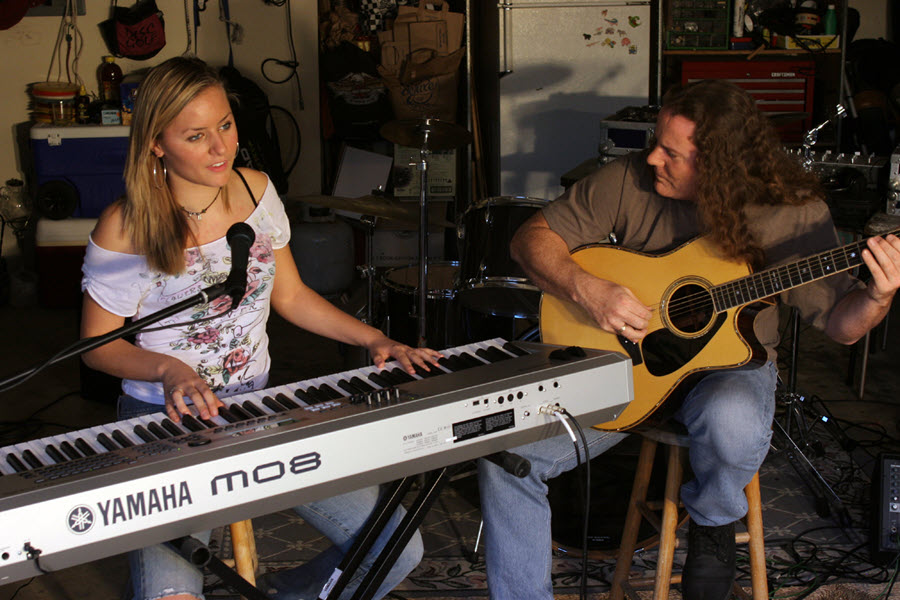Tagged Under:
The Basics Of Piano Keyboard Fingering
Here’s how to make your playing smooth and fluid.
It’s important when learning a new piece of music to plan out your keyboard fingering ahead of time — to decide which fingers you will use to play each note, and how you will move your hand position to cover passages that don’t fit underneath a single location. If you don’t take this important step, you may find yourself unconsciously changing your fingering decisions each time you play a piece of music, which in turn won’t allow the repetition of practice to help you develop proficiency in performance.
Here are some tips for making good choices.
The Basics
Piano keyboard fingering is commonly numbered as follows:
- The thumb is numbered as 1
- The index, or pointer finger, as 2
- The middle finger as 3
- The ring finger as 4
- The pinky as 5
Some players feel that rules are made to be broken, but there are four best practices for piano keyboard fingering that you should follow:
1. In general, don’t use your thumb on black keys. Doing so moves your hand forward (away from you and closer to the back of the keyboard), which makes it harder to control the white keys. The exception is if you are learning a piece of music that starts on a black key and/or is predominately played on the black keys, in which case you will almost certainly have to use your thumb.
2. Try to use as many of your fingers as possible when executing passages. It’s tempting to only use the first two or three fingers, which tend to be the strongest, but the more fingers you utilize, the smoother your playing.
3. Similarly, try to keep your hand in a position that covers as many of the notes in the passage as possible. Think of it as economy of motion: no need to move around more than necessary just because you couldn’t cover one note at the end of a phrase.
4. If you have never studied how to play scales in basic piano lessons/pedagogy, it would be good to work on this keyboard fundamental. The fingerings and technique you learn will be very helpful in figuring out how to execute new music.
Most musical passages you will encounter can be broken down into one of three scenarios. Let’s explore each in turn.
Scenario One: Everything Fits Under Your Fingers
In this scenario, the notes of the phrase all fit easily underneath your five fingers. The fingering for this is easy: just place your hand over the range of notes and play accordingly. For example, if you were to play this passage …

… your hand should be placed over the keys as follows:

This works even when all the notes aren’t white keys. Here is the same example played in the key of E major:

Here, your hand should be placed over the keyboard as follows:

Finally, here’s the same phrase played in the key of E-flat major. This is an instance where it’s fine to place your thumb on a black key:

Here, you should place your hand over the keyboard as follows:

Scenario Two: The Need To Stretch
Usually, only small sections of a piece of music will fall so cleanly under the hand as in the above examples. More common are phrases that can be best played by stretching your fingers so you can reach more notes without having to completely move your hand position. For example:

To play the notes in the first measure, you’ll need to stretch your hand slightly so your 5 (pinky) finger reaches up to the A, as shown below. (No finger needs to be positioned to play the D, since it’s not part of this phrase.)

In the second bar, you’ll need to stretch slightly further so the pinky can now play the B-flat while the rest of your hand remains in position:

Scenario Three: A Change In Hand Position Is Necessary
The most advanced situations are phrases that require you to reach notes further away than any single hand position can cover. This encompasses the widest range of possibilities, and the first that we’ll discuss is a phrase that requires you to make two easy shifts in your hand position along with stretching your fingers during the section, as in this example:

The first two beats in measure 1 require you to stretch your hand so your thumb plays the middle C and your 4 (ring) finger plays the B-flat, like this:

Alternatively, you could have chosen to use the 5 (pinky) finger for the B-flat, fingered as follows:


There is almost always more than one way to approach these kinds of decisions; do what feels best for you.
In the rest of measure 1, the line climbs higher, so you’ll have to move your hand position to be able to reach the remaining notes. As suggested earlier, it’s best to find a way that moves your hand into a position that covers as many of the notes as possible. Accordingly, as you get to the B-flat, you should start to bring your thumb under to the right to bring it closer to the F. That way, after playing the G with the 3 (middle) finger, your thumb will be ready to play the F. You can then stretch your hand upward to get into position for the upcoming B-flat and C, using the 2 (index) and 3 (middle) fingers respectively:

Next, stretch the hand again so you can reach the upper G with your 5 (pinky) finger. As you reach for the G, bring the rest of your fingers back together to cover the last two notes, like this:

Scenario Four: Long Ascending Lines
The longer a phrase is, the more you will have to keep shifting your hand position. As a general rule of thumb (pun intended), you should try to use groupings of three to four notes before shifting your hand position. Let’s figure out what to do for this example:

Trying to use as many note groupings as possible. Here’s one possibility:

The beginning of the phrase through to the middle of the second measure works well as four-note groups, and then you need to bring the thumb under to jump up to the C on beat 3. From there, you can choose a three-note group and bring your thumb under again to help stretch up to the high A. Then you can let your hand relax into a normal position, which allows you to cover the rest of the notes.
The only difficult part of the above example is the jump from the G (played with the 4 finger) to bringing the thumb under to the following C note on beat 3. Here’s an alternate approach that might be smoother for you:

Starting off with two three-note groupings sets you up to play the E, G and high C in the second measure, all within the same hand position (using your thumb, 2 and 4 fingers), after which you can bring your thumb up and into the following notes in closer proximity, which may feel better to you. You can then play the rest of the phrase within the same hand position by just stretching up slightly to reach the A.
By applying these basic principles, you will learn to work out the best fingerings for your hands — an essential step towards smooth and fluid playing.
ALL AUDIO EXAMPLES PLAYED ON A YAMAHA P-515
Check out our other Well-Rounded Keyboardist postings.
Click here for more information about Yamaha keyboard instruments.














